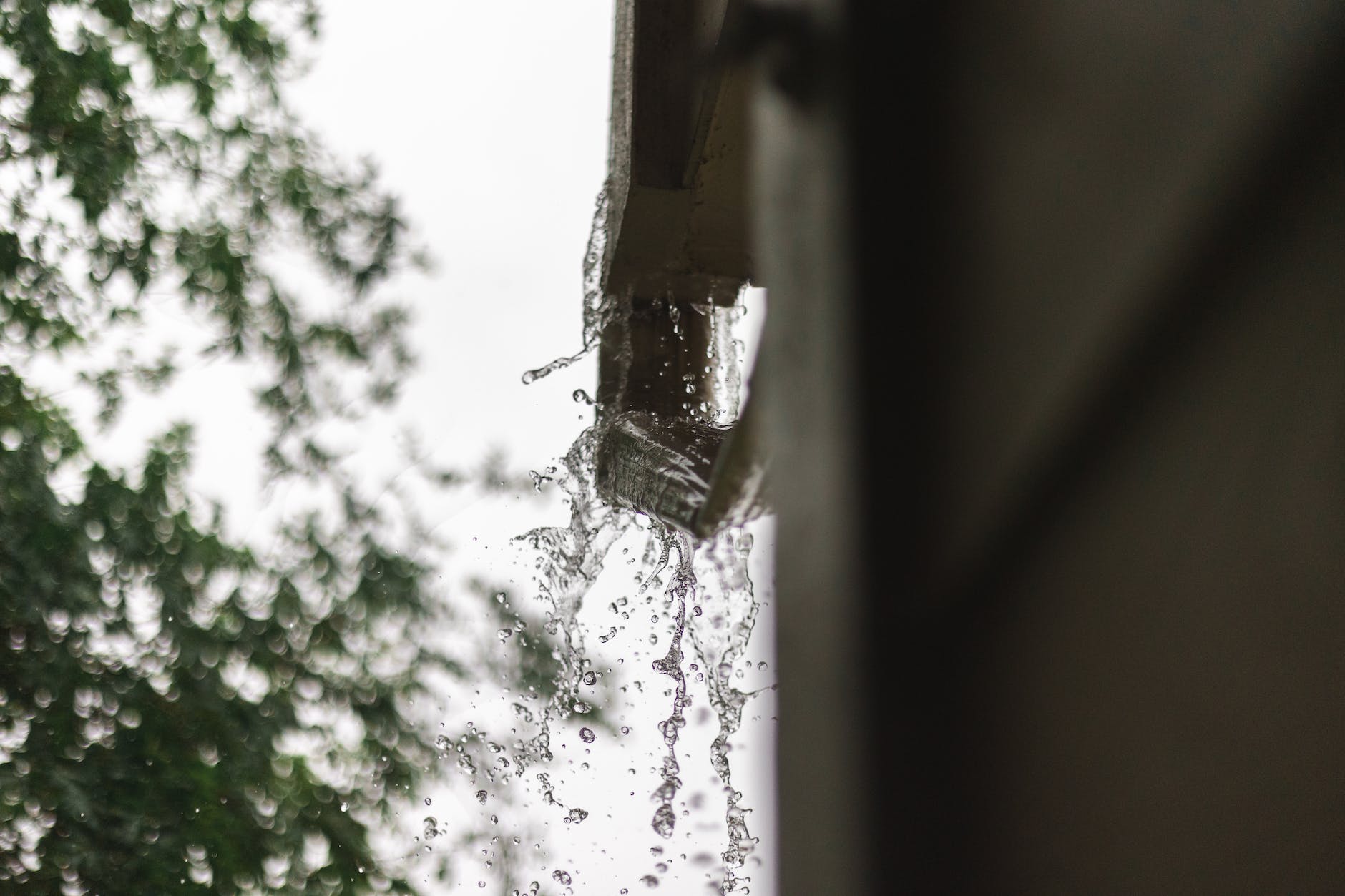To install gutter hangers:
- Begin by gathering the necessary tools and materials, including a ladder, a level, a drill, screws, and the gutter hangers themselves.
- Start at one end of the gutter, positioning the hangers evenly along the length.
- Use a level to ensure a straight and properly sloped installation.
- Secure the hangers to the fascia board using screws, making sure they are firmly attached.
- Repeat the process for the entire length of the gutter, maintaining a consistent spacing between hangers.
- Be mindful of proper alignment and pitch to facilitate efficient water drainage.
- Once all hangers are in place, double-check the installation for stability and adjust as needed.
Properly installed gutter hangers contribute to the longevity and effectiveness of your gutter system, preventing sagging and ensuring optimal water flow.
Introduction to Gutter Hangers
Installing gutter hangers is a crucial step in ensuring the effectiveness and longevity of your gutter system. These unsung heroes are pivotal in supporting and securing your gutters to the roofline, preventing sagging or detachment. A well-installed gutter hanger protects your home from water damage by facilitating proper water drainage and contributing to the overall structural integrity of your roof. This guide will delve into the essentials of gutter hangers, explore different types, provide a comprehensive installation walkthrough, and offer tips to make the process seamless. Whether you’re a seasoned DIY enthusiast or a first-time homeowner, understanding the importance of gutter hangers and mastering their installation is key to safeguarding your home against the elements.
Types of Gutter Hangers
Gutter hangers are crucial in supporting and securing your gutter system, ensuring its stability and functionality. Various gutter hangers are designed to accommodate different roof structures and preferences. The most common types include spike-and-ferrule hangers, which are traditional and economical but may require occasional maintenance, and strap hangers that wrap around the gutter for added support. Additionally, hidden hangers provide a sleek, inconspicuous look by attaching to the fascia board, while gutter brackets offer an adjustable option for varying roof pitches. Each type has its advantages and considerations, allowing homeowners to choose the most suitable hanger based on their specific needs and the architectural features of their homes.
Tools and Materials Needed for Installation
Before diving into the installation process of gutter hangers, it’s crucial to gather the necessary tools and materials to ensure a smooth and efficient installation. You’ll need a sturdy ladder for reaching the gutters, a level to ensure proper alignment, a power drill for making holes, and screws for securing the hangers to the fascia board. A measuring tape is also handy for precise placement, and safety gear such as gloves and safety glasses should be worn throughout the installation.
As for materials, ensure you have the appropriate gutter hangers for your specific gutter system and roofing material. Having these tools and materials on hand will not only streamline the installation process but also contribute to your gutter system’s long-term durability and effectiveness.
Step-by-Step Guide to Installing Gutter Hangers
Installing gutter hangers is a relatively straightforward process, and a step-by-step guide can help ensure a successful and secure attachment to your home’s fascia board. Begin by donning safety gear, including gloves and safety glasses. Position your ladder securely, ensuring it provides stable access to the gutters. Using a measuring tape, mark the spacing for the gutter hangers along the fascia board, typically around two to three feet apart, for optimal support. Next, use a level to ensure a straight and even installation. With a power drill, make pilot holes at the marked locations.
Carefully place the gutter hangers over the holes and secure them using appropriate screws. It’s crucial to choose screws that are resistant to corrosion, as they will be exposed to the elements. Continue this process along the entire length of the gutter, ensuring consistent spacing and alignment. Once all hangers are securely attached, check for levelness and make any necessary adjustments. Finally, inspect the system for stability and ensure the gutters are appropriately sloped toward the downspouts for efficient water drainage. This systematic approach to installing gutter hangers helps guarantee a robust and long-lasting support system for your gutters, contributing to the overall effectiveness of your home’s drainage system.
Choosing the Right Gutter Hangers for Your Roof
Selecting the appropriate gutter hangers for your roof is a pivotal step in ensuring the longevity and effectiveness of your gutter system. The choice of gutter hangers depends on various factors, including the type of roof, climate, and the amount of precipitation your area receives. The most common gutter hangers for standard residential roofs are spike and ferrule hangers, strap hangers, and hidden hangers. Spike and ferrule hangers, though traditional, provide reliable support and are suitable for most homes. Strap hangers are versatile and adjustable, making them a great choice for irregular roof lines. Hidden hangers offer a more modern and streamlined appearance concealed within the gutter, providing a cleaner aesthetic.
Additionally, consider the material of the hangers—options include aluminum, steel, and plastic. Aluminum hangers are popular due to their corrosion resistance, while steel hangers offer robust support. Plastic hangers, lightweight and rust-resistant, are suitable for less demanding installations. It’s essential to assess the specific needs of your roof, considering factors such as the pitch, size, and material, to make an informed decision on the type and material of gutter hangers that will best complement your roofing system. Choosing the right gutter hangers ensures a secure and stable foundation for your gutter system, contributing to effective rainwater management and protecting your home from potential water damage.
Common Mistakes to Avoid During Installation
Avoiding common mistakes is crucial when installing gutter hangers to ensure the longevity and effectiveness of your gutter system. One prevalent mistake is improper spacing between hangers. Following manufacturer guidelines and spacing recommendations is essential to provide adequate support for the entire gutter length. Another common error is neglecting the alignment and pitch of the gutters. Ensure they are sloped correctly to allow water to flow towards the downspouts without pooling or standing water.
Additionally, using the wrong type or size of screws can lead to instability and eventual failure of the hangers. Always choose screws that are compatible with both the hangers and the material of your fascia board. Skipping the use of a level during installation is another common oversight. A level ensures that the gutters are installed evenly, preventing water from collecting in one area. Lastly, overlooking proper sealing and waterproofing can result in leaks and water damage. Be meticulous in sealing joints and connections to create a watertight system. By avoiding these common mistakes, you’ll contribute to your gutter hanger installation’s overall effectiveness and durability, preventing potential issues.
Maintenance Tips for Gutter Hangers
Proper maintenance of gutter hangers is essential for ensuring the longevity and effectiveness of your gutter system in diverting rainwater away from your home. Regular inspections are the first line of defense against potential issues. Periodically check for any signs of damage, such as bent or loose hangers, and promptly address any problems to prevent further complications. Clearing debris from the gutters, such as leaves, twigs, and dirt, is crucial to maintain optimal water flow. This prevents clogs and reduces the weight on the hangers, preventing them from becoming overloaded and strained.
Additionally, inspect the fasteners and screws to ensure they are securely in place, tightening them if necessary. During maintenance, examine the condition of the fascia board and repair any damage promptly to provide a stable surface for the hangers. Consider applying a protective coating or sealant to the hangers and fasteners to shield them from the elements, enhancing their resistance to rust and corrosion. Regularly cleaning and maintaining your gutter hangers prolongs their lifespan and safeguards your entire gutter system, preventing potential water damage to your home’s foundation and exterior.
Benefits of Properly Installed Gutter Hangers
The benefits of properly installed gutter hangers extend beyond mere structural support, playing a pivotal role in your gutter system’s overall effectiveness and longevity. Firstly, properly installed gutter hangers ensure a secure attachment of the gutters to the fascia board, preventing sagging or detachment, even under the weight of heavy rain or snow. This structural integrity is crucial in maintaining the optimal slope for water drainage, preventing the accumulation of debris, leaves, and standing water that could lead to clogs and potential damage to the roof or foundation.
Moreover, a well-supported gutter system helps protect the exterior of your home from water damage, as water is efficiently directed away from the roof and walls. This not only preserves the aesthetic appeal of your home but also prevents costly repairs associated with water-related issues, such as rot, mold, or foundation damage. In essence, the benefits of properly installed gutter hangers go beyond the immediate function of supporting gutters; they contribute to the overall health and resilience of your home’s structure, safeguarding against the potential ravages of water over time.
FAQs About Gutter Hanger Installation
- Q: Can I install gutter hangers independently or hire a professional? A: While installing gutter hangers is a manageable DIY project for many homeowners, it depends on your comfort level with basic tools and working at heights. If you’re unsure, it’s always a good idea to consult with a professional for guidance or hire a contractor for the installation to ensure it’s done correctly.
- Q: How do I determine the right gutter hangers for my roof? A: The choice of gutter hangers depends on factors such as the type of gutters you have, the pitch of your roof, and the local climate. K-style gutters, for example, often use different hangers than half-round gutters. Consult the manufacturer’s guidelines or seek advice from a knowledgeable professional to select the appropriate hangers for your specific roofing system.
- Q: How far apart should gutter hangers be installed? A: The spacing between gutter hangers is critical to their effectiveness. Generally, hangers should be spaced every 2 feet along the gutter, but this can vary based on factors like the expected snow load and local weather conditions. Refer to the manufacturer’s recommendations or local building codes for specific spacing guidelines.
- Q: Can I reuse existing gutter hangers when replacing my gutters? A: Reusing gutter hangers is possible if they are in good condition and compatible with the new gutter system. However, it’s essential to inspect them thoroughly for wear and damage. If they show signs of rust, corrosion, or weakening, it’s advisable to replace them to ensure the stability of the new gutter installation.
- Q: Are there any special considerations for installing gutter hangers on different roofing materials? A: Yes, the type of roofing material can impact the installation process. For example, installing gutter hangers on a metal roof may require specialized techniques or fasteners. Always follow the guidelines provided by the gutter hanger manufacturer, and consider consulting with a roofing professional if you have any concerns about compatibility with your specific roofing material.






1 comment